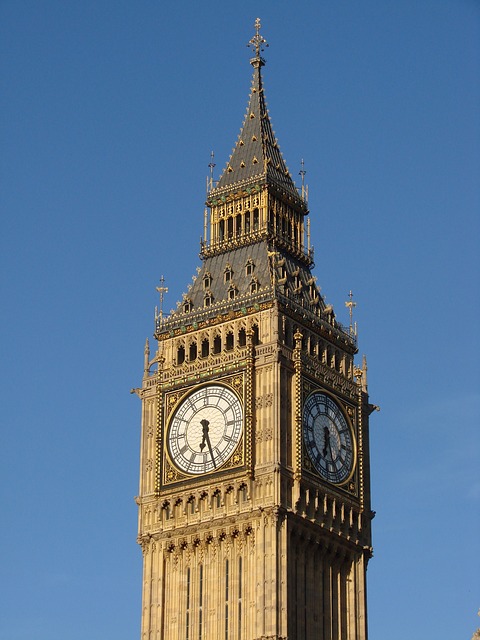Difference between revisions of "English Ballroom Dance"
From Londonhua WIKI
| Line 27: | Line 27: | ||
An overview of Ballroom Dancing from the Middle-Ages through the early 19th century. | An overview of Ballroom Dancing from the Middle-Ages through the early 19th century. | ||
<br><br> | <br><br> | ||
| − | Starting in the Middle Ages, Ballroom Dance evolved in Europe as a series of court dances. Although these dances were highly formal in nature, | + | Starting in the Middle Ages, Ballroom Dance evolved in Europe as a series of court dances. Although these dances were highly formal in nature, and were most often performed facing the throne, they owed many of their steps to folk dances <ref> Cohen-Stratyner, B. (n.d.). Ballroom Dance. Retrieved May 9, 2017, from https://www.britannica.com/art/ballroom-dance |
| + | </ref>. Indeed, besides location and atmosphere, very little distinction existed between court and folk dancing <ref> History Of Ballroom Dance. (n.d.). Retrieved May 9, 2017, from http://www.ballroomdance.co/history-of-ballroom-dance/ | ||
| + | </ref>. In both cases, lines of dancers moved around the floor in lines or circles, joining together and moving apart as a group <ref> Wilson, C. A. (n.d.). The Arrival of the Waltz in England, 1812. BRANCH. Retrieved May 9, 2017, from http://www.branchcollective.org/?ps_articles=cheryl-a-wilson-the-arrival-of-the-waltz-in-england-1812 | ||
| + | </ref>. One reason behind this style of movement was the constraint put upon dancers by the rooms they occupied. In the Middle Ages, it was common for rooms to have a central hearth, completely blocking the center of the floor <ref> History Of Ballroom Dance. (n.d.). Retrieved May 9, 2017, from http://www.ballroomdance.co/history-of-ballroom-dance/ </ref>. Even when chimneys and hearths began to move to the sides of dance floors, the [[Contradance|contradance]] style remained dominant <ref> Wilson, C. A. (n.d.). The Arrival of the Waltz in England, 1812. BRANCH. Retrieved May 9, 2017, from http://www.branchcollective.org/?ps_articles=cheryl-a-wilson-the-arrival-of-the-waltz-in-england-1812 | ||
| + | </ref>. | ||
==Waltz: Dancing to a New Tune== | ==Waltz: Dancing to a New Tune== | ||
<br> | <br> | ||
| Line 72: | Line 76: | ||
<br><br> | <br><br> | ||
=References= | =References= | ||
| − | + | <br> | |
| − | <br>< | + | <references/> |
| − | |||
| − | |||
<br><br> | <br><br> | ||
Revision as of 11:59, 9 May 2017
English Ballroom Dance
 Your Project Page Picture Caption |
Contents
Abstract
This milestone explores modern English Ballroom Dance styles, techniques, and histories. Specifically, the objective of this milestone will be to provide a historical background for International Waltz and International Cha Cha, to experience other International styles through classes, and to generate video demonstrations of learned routines for International Waltz and Cha Cha.
Prior to embarking on this milestone, Benjamin Secino took over one hundred hours of Ballroom classes at Worcester Polytechnic Institute, learning International Waltz, Foxtrot, Quickstep, American Waltz, Foxtrot, International Cha Cha, Rumba, Jive, Mambo, Bolero, Samba, American Cha Cha, Rumba, East Coast Swing, West Coast Swing, and Lindy Hop. Benjamin competed in four collegiate Ballroom competitions, winning five ribbons. Benjamin is also the Treasurer of the WPI Ballroom Dance Team.
Introduction
I suggest you save this section for last. Describe the essence of this project. Cover what the project is and who cares in the first two sentences. Then cover what others have done like it, how your project is different. Discuss the extent to which your strategy for completing this project was new to you, or an extension of previous HUA experiences.
As you continue to think about your project milestones, reread the "Goals" narrative on defining project milestones from the HU2900 syllabus. Remember: the idea is to have equip your milestone with a really solid background and then some sort of "thing that you do". You'll need to add in some narrative to describe why you did the "thing that you did", which you'd probably want to do anyway. You can make it easy for your advisors to give you a high grade by ensuring that your project milestone work reflects careful, considerate, and comprehensive thought and effort in terms of your background review, and insightful, cumulative, and methodical approaches toward the creative components of your project milestone deliverables.
Section 1: Background
An overview of Ballroom Dancing from the Middle-Ages through the early 19th century.
Starting in the Middle Ages, Ballroom Dance evolved in Europe as a series of court dances. Although these dances were highly formal in nature, and were most often performed facing the throne, they owed many of their steps to folk dances [1]. Indeed, besides location and atmosphere, very little distinction existed between court and folk dancing [2]. In both cases, lines of dancers moved around the floor in lines or circles, joining together and moving apart as a group [3]. One reason behind this style of movement was the constraint put upon dancers by the rooms they occupied. In the Middle Ages, it was common for rooms to have a central hearth, completely blocking the center of the floor [4]. Even when chimneys and hearths began to move to the sides of dance floors, the contradance style remained dominant [5].
Waltz: Dancing to a New Tune
The introduction, reception, and development of International Waltz.
Popularization of Ballroom Dance
The development and expansion of Ballroom Dance in the 19th and 20th centuries, including the introduction of new dances and the rise of competitions.
Cha Cha: Ballroom Gets Spicy
The history of Cha Cha in England.
Ballroom in the 21st Century
The current state of Ballroom Dancing.
Section 2: Deliverable
An overview of the classes taken and the routines learned.
International Waltz
An explanation of the Waltz routine and a video of a performance.
International Cha Cha
An explanation of the Cha Cha routine and a video of a performance.
Gallery
Conclusion
In this section, provide a summary or recap of your work, as well as potential areas of further inquiry (for yourself, future students, or other researchers).
References
- ↑ Cohen-Stratyner, B. (n.d.). Ballroom Dance. Retrieved May 9, 2017, from https://www.britannica.com/art/ballroom-dance
- ↑ History Of Ballroom Dance. (n.d.). Retrieved May 9, 2017, from http://www.ballroomdance.co/history-of-ballroom-dance/
- ↑ Wilson, C. A. (n.d.). The Arrival of the Waltz in England, 1812. BRANCH. Retrieved May 9, 2017, from http://www.branchcollective.org/?ps_articles=cheryl-a-wilson-the-arrival-of-the-waltz-in-england-1812
- ↑ History Of Ballroom Dance. (n.d.). Retrieved May 9, 2017, from http://www.ballroomdance.co/history-of-ballroom-dance/
- ↑ Wilson, C. A. (n.d.). The Arrival of the Waltz in England, 1812. BRANCH. Retrieved May 9, 2017, from http://www.branchcollective.org/?ps_articles=cheryl-a-wilson-the-arrival-of-the-waltz-in-england-1812
External Links
If appropriate, add an external links section
Image Gallery
If appropriate, add an image gallery


